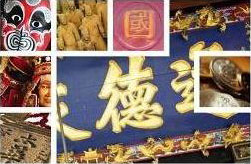COURSE DESCRIPTION

Art is exciting! It is also controversial and can mean different things to different people. In this course you will experience art through looking at the history of art and expression, while examining current trends and types of art. You will learn art terminology, critique artworks, write a research paper, create a piece of art yourself and finally, develop a presentation as your final exam.
You will view art by searching on the Internet and finding relevant sites, but watching YouTube and other videos, and by ‘visiting’ online art museums.
You will interact with other students through the Discussion Board and through the Virtual Classroom.
The course will consist of 18 major units, divided equally into two semesters. The final will be a special presentation that you design.
Obridge Academy/St. Joseph’s College
Online: (3 credit hours)
Instructor: Xing (Harry) Yang, M.A. E-mail: harry.yang@obridgeacademy.com
Instructor
Xing (Harry) Yang, M.A. Long Island University, B.A., Chinese Language and Literature, Teachers’ University of Technology, Chang Zhou, Jiangsu.
Credit and Time
Students will receive three college credits, or one high school credit. The college credit course will last for one semester (15 weeks); the high school course for 36 weeks.
Aims and Purpose
Linguistic Knowledge
Grasp Chinese tones, phonetics and rhythm
Recognize 500 characters and be able to reproduce character stroke order
Correctly reproduce Chinese word order, basic sentence patterns
Master distinct ways of social interaction (body language, communicative signals)
Explain fundamental linguistic differences between Chinese and English languages
Explain differences in likes and dislikes in contemporary China, including music, television and social media.
Linguistic Skills
Can understand basic and rehearsed words and expressions, simple sentences and expressions
Can repeat and recite learned expressions connected to concrete daily needs and wants
Can recognize Pinyin and 500 (simplified) characters and function as an emerging reader
Can rewrite characters and compose basic expressions based on the dialogs in Pinyin
Cultural Awareness
Students will
Experience contemporary Chinese culture and understand the connection between language and culture
Demonstrate basic social and computer etiquette relative to Chinese culture
Understand the commonalities and differences in cultural experience between Chinese and American youth
Explore the similarities and differences between Chinese and American Internet and social media practices.
Learning Outcomes
At the end of The World of Mandarin Chinese students are expected to demonstrate:
Confidence in speaking Chinese, coupled with reduced anxiety of making an error
An understanding of an ancient culture that is different from their own culture
The ability to speak about personal interests, national origin, countries, food, music, and a host of other basic topics.
Teaching and Learning Approach
We encourage:
Learning-autonomy and cooperation throughout the entire course. Students are assigned to ‘study groups,’ within which they will communicate on a regular basis; each group has a Chinese speaking ‘language buddy’ who will interact with the group members and assist them in speaking and reading
The use of digital technology to enhance learning, including online recording devices, smart phones, video software, social web sites and other media
Project Based Learning (PBL) as imagined by John Dewey, where students develop projects based on their interests; the projects are done at the appropriate proficiency level and can include levels of Bloom’s Taxonomy
Active student participation in all levels and aspects of the language learning experience.
Resources and Important Links
Obridge Academy Chinese Facebook Page:
Confucius Institute Online: http://www.chinesecio.com; http://www.chinesecio.com/cms/zh-hans/learning
Great Wall Chinese: http://www.greatwallchinese.cn/portal.do
Chinese Interactive Exercises: http://www.quia.com/dir/chinese/
Culture Website: http://www.cultural-china.com
Great Wall: http://video.nationalgeographic.com/video/exploreorg/china-great-wall-eorg
Travelling in China: http://www.nationalgeographicexpeditions.com/expeditions/china-tour/detail.
Additional reading assignments on Chinese culture, history and social institutions assigned regularly throughout the course.
Assessment
Tests (at the end of each Act): 25%
Quizzes (in each Scene): 15%
Assignments (recordings, comprehension activities, writing): 25%
Participation, including Discussion Board Topics: 25%,
Projects: 10%,
Act and Scene Topics
Act One: The Inside World: introductions, family, numbers
Act Two: Finding your Way in the World: directions, destinations, numbers, schedules
Act Three: The World of Food: types of food, countries, ordering and paying for food
Act Four: The Digital World: video, texting, social websites
Act Five: The Outside World: nature, games, and sports
Act Six: The World of Learning: school, teaching, tests, future careers.


